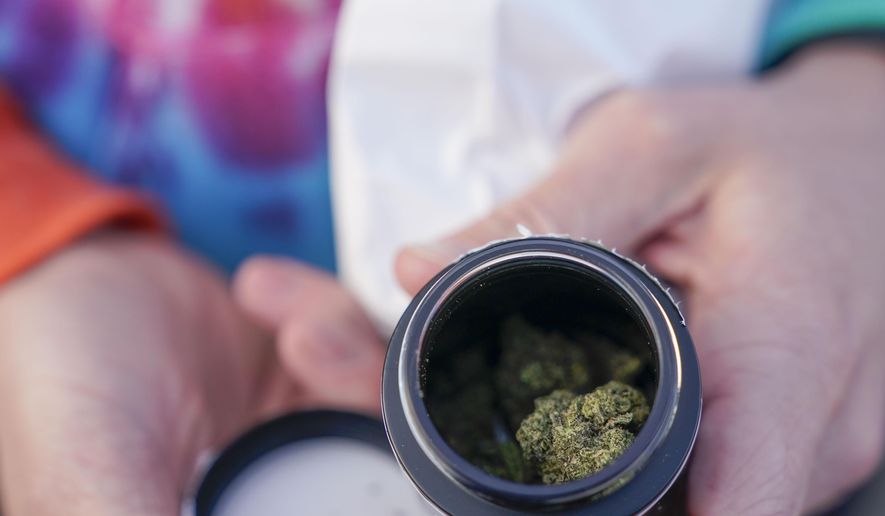Highway safety advocates warn that cannabis is playing an increased role in a growing number of traffic fatalities as Congress and more states consider legalizing recreational marijuana and edibles this fall.
In a report released July 26 during a national impaired driving conference in Washington, the Governors Highway Safety Association (GHSA), Responsibility.org and the National Alliance to Stop Impaired Driving (NASID) called for a public education campaign to address the crisis.
The report cites early projections from the National Highway Traffic Safety Administration (NHTSA) that show the number of U.S. traffic deaths rose from 38,824 in 2020 to more than 42,000 in 2021 — the highest since 2007.
Bruce Landsberg, vice chairman of the National Transportation Safety Board (NTSB), an independent federal agency that investigates civil transportation accidents, said the legalization of cannabis is contributing to that rise.
“It’s a problem. The legalization of all the different substances is outstripping our ability to keep up in testing for them,” Mr. Landsberg told The Washington Times in an interview. “With alcohol, we have a very clearly defined standard, but we don’t have that for opioids and cannabis.”
Speaking at the NASID conference on Friday, Mr. Landsberg urged safety advocates to help government officials implement new administrative procedures, police training programs and computerized driver monitoring systems to address drug-impaired driving.
Cannabis, which lingers several days longer in the bloodstream than alcohol, defies existing roadside breathalyzer tests, often leaving police to discover its presence only after an arrest or death.
An October 2020 NHTSA report on trauma centers data found tetrahydrocannabinol (THC), the main psychoactive compound in cannabis, in the systems of 33% of drivers involved in fatal crashes — up from 21% before the pandemic.
The NHTSA report also found that cannabis has become more common than alcohol in the systems of drivers involved in fatal crashes, with 33% testing positive for cannabis in their bodies compared to 29% for alcohol. At the same time, the number of drivers in fatal crashes who tested positive for more than one impairing substance rose from 18% to 25%.
The 0.08% standard is the legal limit for alcohol in the bloodstream across most of the country, but few states have developed a legal limit for marijuana, in part because tolerance levels vary more widely.
Police must rely on roadside observations and a blood test or, in some states, a urine screen to confirm whether a suspect is arrested for driving under the influence of marijuana, which is illegal in all 50 states.
Darrin Grondel, a former Washington state highway patrol trooper and administrator who serves as director of NASID, said this lack of effective testing means many people don’t grasp the dangers of smoking up and driving.
“We’re seeing increases in fatal crashes that involve drug intoxication. Some states claim they haven’t had an increase, but their toxicology labs will tell you they’re not seeing a problem because they’re not testing for it,” Mr. Grondel said.
The former state trooper is calling on law enforcement agencies to update their officer training, hire more drug recognition experts and adopt oral fluid drug testing — which uses a sponge to soak up saliva — in roadside screenings.
He noted that some states, including Michigan, are already using saliva tests in pilot programs, helping officers overcome the reality that edibles do not have an odor and blood tests are too complex to administer on the road.
“Oral fluid testing gives you a ’yes’ or ’no’ for active impairment involving six to eight of the most prominent substances like cannabis, opioids and benzodiazepines,” Mr. Grondel said.
Since Colorado and Washington became the first states to legalize recreational marijuana in 2012, 16 states and the District of Columbia have joined them. Several, including Maryland, will have legalization on the ballot in November.
Earlier this year, the Democratic-led House of Representatives passed a bill to legalize marijuana nationwide. But the legislation faces a higher bar in the evenly divided Senate, where Democrats unveiled their version of the bill on Thursday.
“We are seeing astronomical rates of marijuana-impaired driving crashes resulting in injuries and deaths in states like Colorado. That should be a flashing red light for Congress and the state legislatures,” Jonathan F. Thompson, executive director of the National Sheriffs’ Association, said in an email.
Officials at GHSA, a nonprofit representing the state offices that administer federal highway safety grants, said they hoped Friday’s report would be a wake-up call to lawmakers.
“As legal cannabis use becomes more widespread in the U.S., motorists need to know the dangers of driving under the influence,” GHSA Executive Director Jonathan Adkins said in a statement. “But that message won’t be heard if it’s outdated, irrelevant or insulting to cannabis consumers.”
Changing cannabis users’ attitudes about driving while high won’t be easy, experts say.
According to a AAA Foundation for Traffic Safety survey, only 69% of Americans believe it is dangerous to drive within an hour of consuming cannabis, compared to 95% who find it extremely dangerous to drive while over the legal blood alcohol limit.
Some popular attitudes also reject widespread scientific evidence that cannabis impairs the parts of the brain responsible for attention, decision-making, coordination and reaction time while driving.
“I think a lot of people truly believe that driving while high makes them a better, slower, more cautious driver, and it’s absolutely false,” said Brian Swift, 61, NASID’s national spokesman. “In upper Michigan in 2013, my parents were killed by a logging truck driver who was high on marijuana, so I know it’s false.”
• Sean Salai can be reached at ssalai@washingtontimes.com.




Please read our comment policy before commenting.